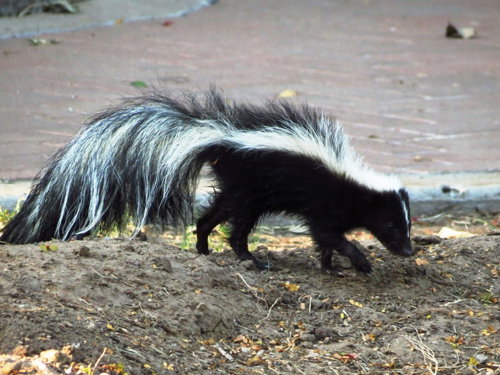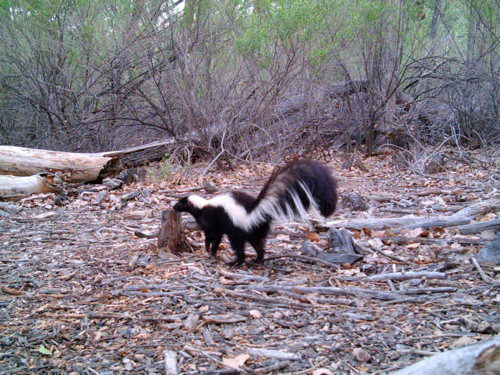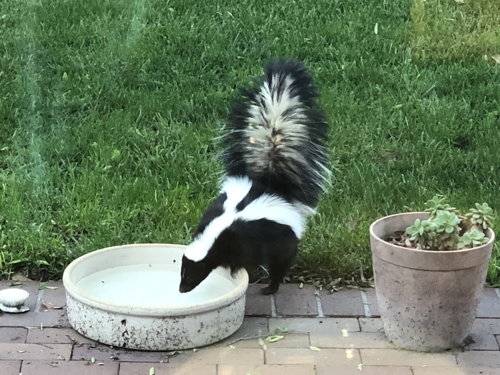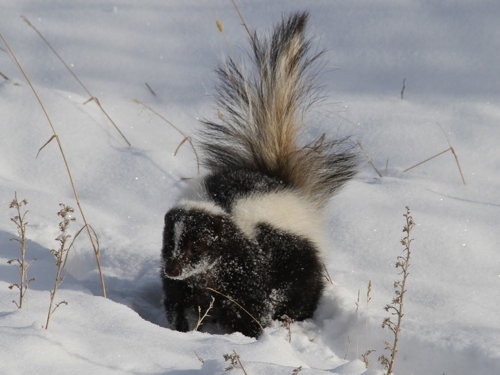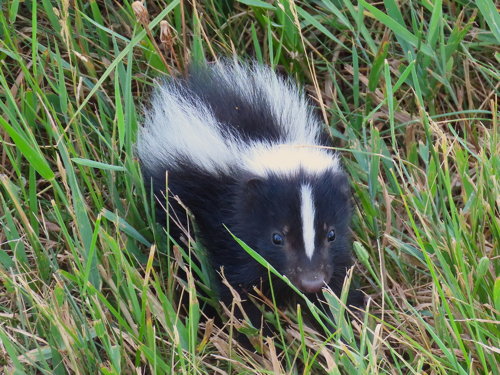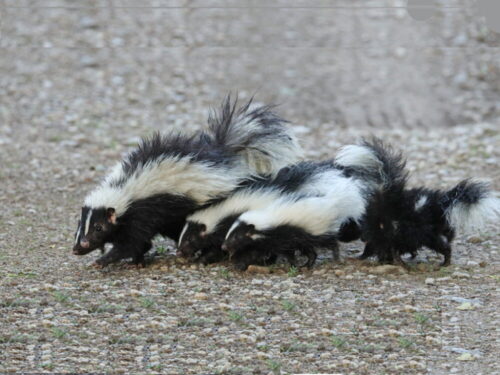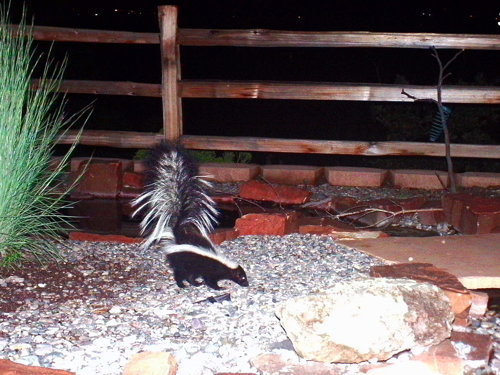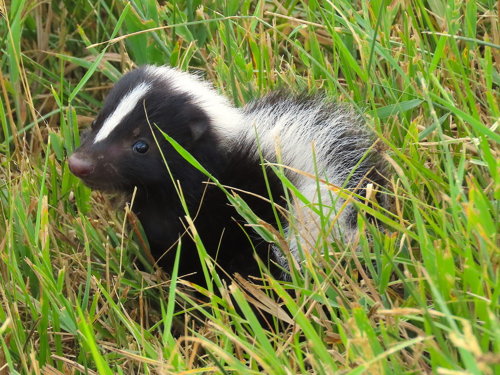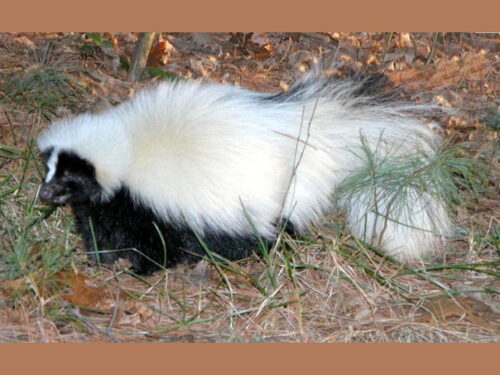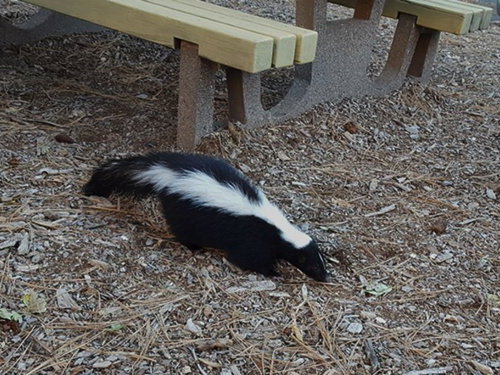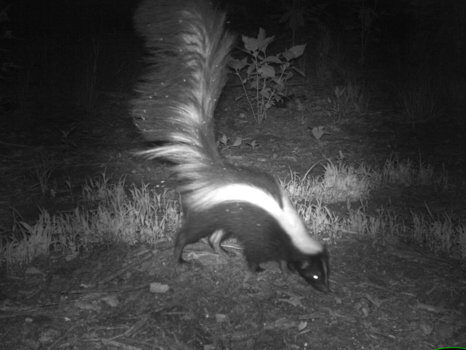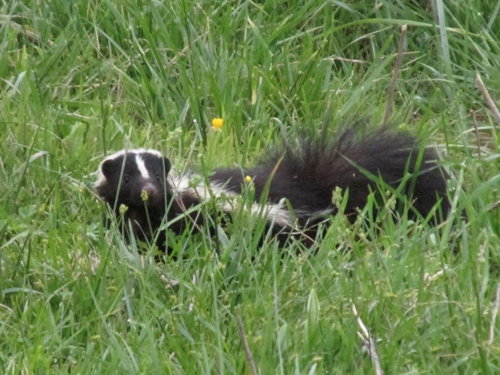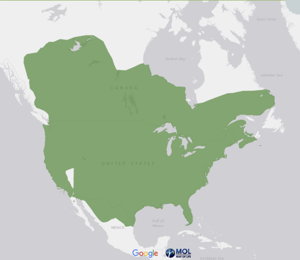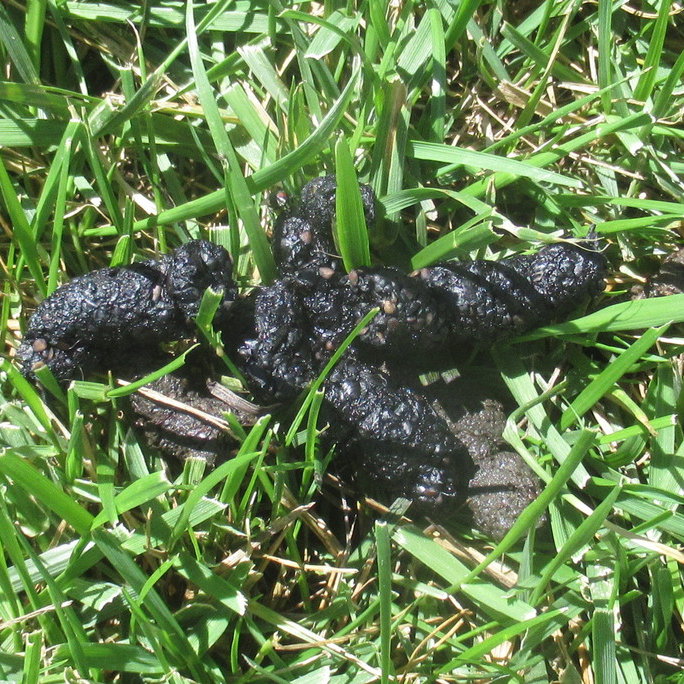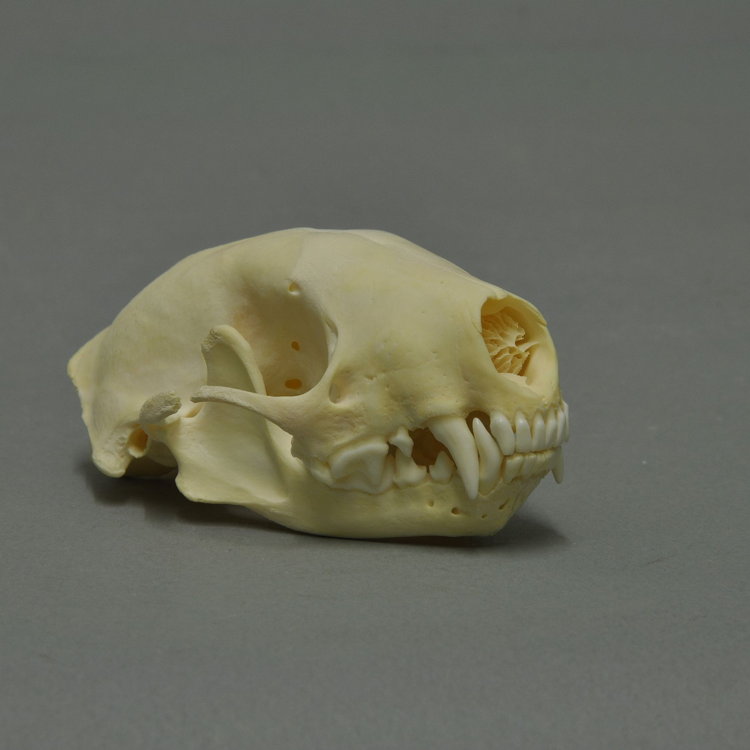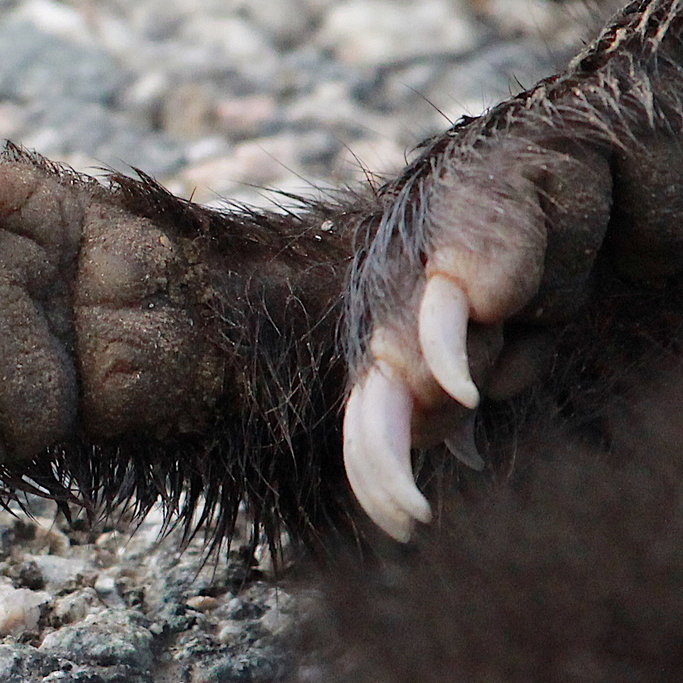Striped Skunk
Scientific Name: Mephitis mephitis
Type: Mammal
Family: Mephitidae (Skunks)
Size: 18 to 32 inches
Weight: up to 13 pounds
Life Span: 3 years in the wild; 15 years in captivity
Physical Description
The striped skunk is stoutly-built with short legs, a small, triangular-shaped head, short ears, black eyes, and a long furry tail. Front feet have five long, curved claws used for digging; claws on the back feet are shorter and straighter. In general, males are slightly larger than females.
Although the color pattern of striped skunk can vary widely from individual to individual, it generally consists of a black base with a white stripe extending from the head down to the shoulder where it divides in two and then continues along the flanks to the rump and tail. Brown or cream-colored mutations can occur.
Like all skunks, the striped skunk has scent glands on either side of the anus. These glands contain a foul-smelling musk that is used for defense.
Range and Habitat
Striped skunks live in most of the continental United States and southern Canada. In addition, they can be found in northern Mexico.
They inhabit a wide variety of habitats such as woodlands, forests, wooded ravines, plains, scrubland, and riparian areas. In addition, they can be found in suburban neighborhoods as well as other urban environments. They have been documented at elevations as high as 13,000 feet.
Diet
Striped skunks are opportunistic feeders, eating what is available at the time. During the warmer months, they will primarily eat insects such as grasshoppers, crickets, beetles, and various larvae. They also consume other invertebrates like worms and crayfish. During the cooler months, they tend to eat small mammals and young birds as well as amphibians, reptiles, fish, and carrion. In addition, they will eat some plant material when it is available.
Behavior and Social Life
Stripped skunks are solitary animals except during breeding season and are primarily nocturnal. During the day, they typically spend time in underground dens. However, hollowed logs, rock or brush piles, and the area underneath buildings may also be used. While stripped skunks do not hibernate, they do become inactive during the winter, relying on stored fat for energy.
Skunks have powerful feet and long nails for digging. When searching for food like worms and grubs, they will dig holes in lawns, gardens and golf courses. If a skunk cannot find a suitable den abandoned by another mammal, it is capable of digging its own.
Despite being passive in nature, striped skunks, like all skunks, are known for their musk-filled scent glands used to ward off predators. Musk is an irritant and can cause nausea, intense pain and temporary blindness. Skunks are able to spray this foul-smelling liquid up to 10 to 20 feet. When threatened, a skunk will face its opponent, arch its back, raise its tail, and stomp on the ground. It may even do a temporary handstand. If the opponent does not back away, the skunk will bend around and spray.
While striped skunks are usually silent, they can make a wide variety of sounds (hissing, screeching, churring, growling, twittering, and cooing) during social interactions and when alarmed.
Title
Foraged Area
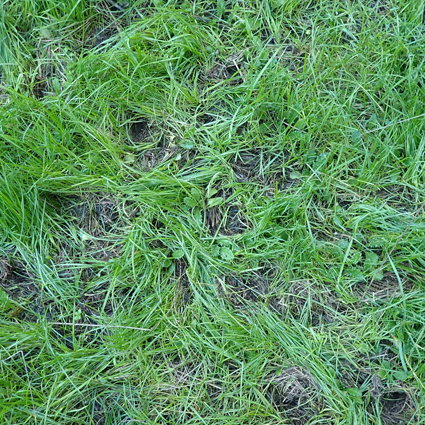
Life Cycle
Striped skunks usually mate once per year, between mid-February and mid-April. At this time, male skunks will roam over a large area, sometimes covering up to 2.5 miles in a night, looking for a female. A single male may mate with several females and defend them against other males for the duration of the mating period. After this time the females confine themselves to their dens and the males leave.
Kits are born around mid-May to early June. There are usually 2 to 12 kits per litter. The young are born blind and with little fur. Their eyes open at about 3 weeks after birth. At around 6 to 7 weeks of age, the kits are weaned and will accompany their mothers outside the den. Young males usually become independent in July or August, while females often stay with their mothers until the next spring.
Mother and Kits
Ecological Role
Striped skunks are important in insect control, eating large numbers of undesired arthropods. In contrast, they have few natural enemies except for birds of prey. Mammalian predators usually avoid skunks in order to not risk getting sprayed.
Interactions With Humans
Skunks and humans have been associated for a long time. Skunks have been trapped and bred in captivity for their fur and kept as pets. The musk is used as a perfume foundation.
Although, there is no evidence that skunks are currently used for food or medicine, native North Americans used skunks for both these purposes.
Interesting Facts
- The striped skunk is one of the most recognizable of North America’s mammals due to its popularity in cartoons and children’s books.
- The name Mephitis is Latin for “bad odor”.
- Stripped skunks can run as fast as 10 mile per hour.
- They have poor eyesight, but excellent hearing and sense of smell.
- Skunk spray can be detected up to 1.5 miles away from the source.
- A group of skunks is called a “surfeit”.
- Farming skunks for their fur became populate during the late 1890s but fell out of favor as it was not profitable enough.
- The striped skunk is one of the major carriers of rabies.
- The striped skunk represents family loyalty and defense of loved ones to the Muskogee people.
- The Winnebago people view the striped skunk as a symbol of vanity, beautiful on the outside and ugly on the inside.
- Skunks are immune to snake venom.
- Skunks will eat bees and attack beehives.

